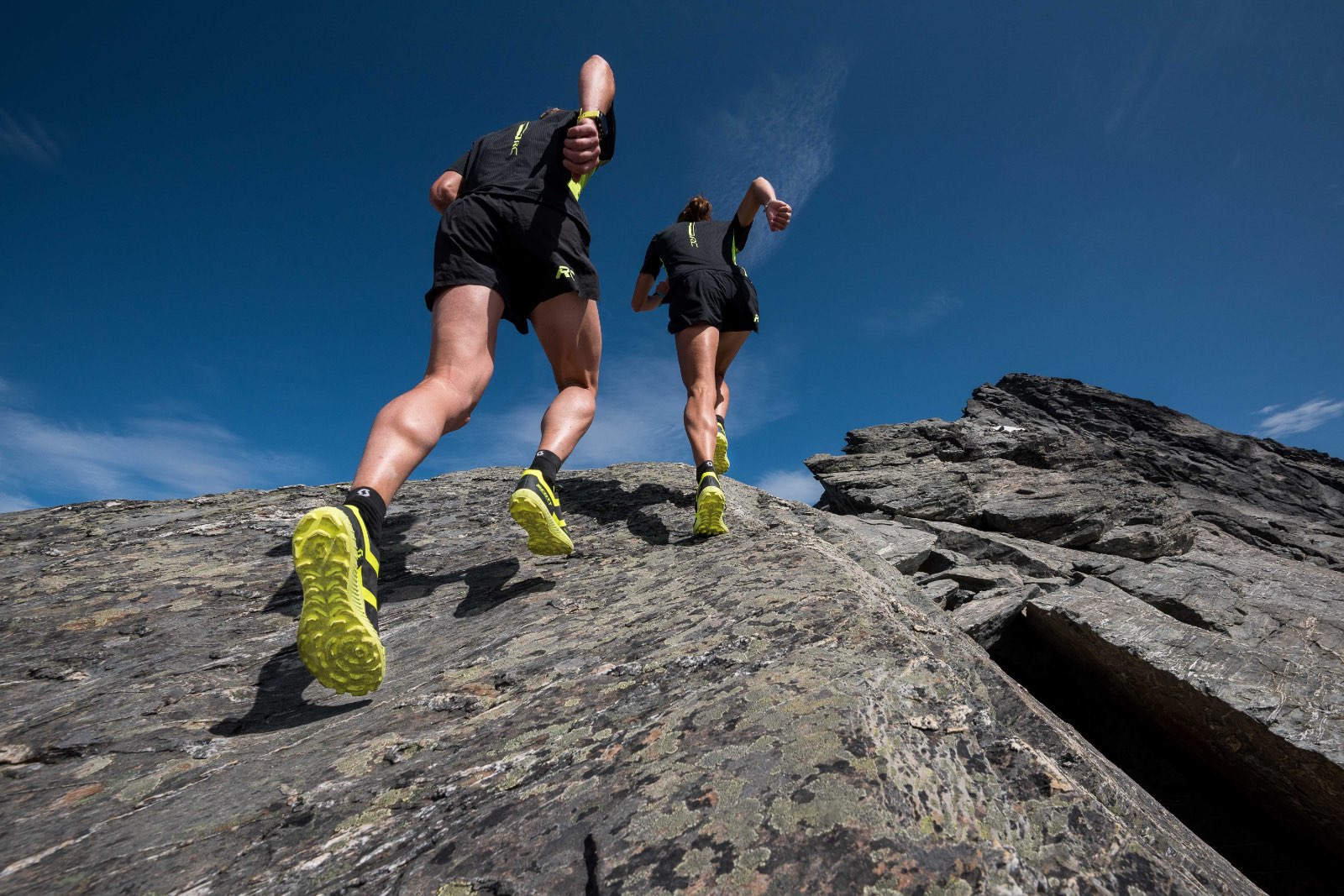
Running Shoe Selection: What Science Tells Us
As shoe experts, health care professionals or runners, it is important to see beyond the fight for market share and to look at what actual research tells us about running shoes. Let’s take a look.
Talking running shoes always raises passions. Some run in anything and couldn't care less, others will attribute all their success and injuries to the shoes they wear. Like fashion, trends in running shoes seem to go full circle every decade and it is easy to drink the Kool-Aid and to just follow the latest trends. After all, every shoemaker has their claims of improving performances and comfort and reducing injuries.
As shoe experts, health care professionals, or runners, it is important to see beyond the fight for market share and to look at what actual research tells us about running shoes. Let’s take a look.
Cushioning and Stack Height
A popular belief is that cushioning helps reducing the risk of injuries. This is based on the idea that the impact while running is a cause of injury and that cushy shoes would prevent injuries by lowering those forces. While it is obvious that running injuries are often the result of excessive and repeated impact, the claim that cushy shoes can reduce the forces has not been proven. As a matter of fact, studies that addressed cushioning as an injury prevention strategy did not show a significant decrease of the injury frequency when changing the midsole hardness. Runners who run in very cushy shoes would even display increased leg stiffness while running as a way to maintain a constant vertical trajectory. Softer shoes would mean less absorption happening at the leg and vice versa. Cushioning would encourage harder landings, especially when changing to lighter and thinner shoes.
Other issues that could arise from thick, “maximalist” shoes would be a decrease in what the foot feels when landing on the ground. This capacity called proprioception is important in monitoring impact and foot position. There is still little clinical data regarding proprioception and cushioning at the moment but this could explain why some runners who experience lower leg pain sometimes benefit from thinner and more sensitive shoes as a way to improve their alignment.
Pronation Control and Stability
Pronation happens when the foot rolls inward and rotates outwards during the stance phase of running. This movement happens naturally in most runners although at various degrees.

The idea of pronation control or stability in shoes has been around for a while, but has never been supported by any scientific evidence. Marketing and trends have been pushing the concept of stability for decades, although it has been proven that increased pronation does not predict injuries in runners. Pronation control shoes would be ineffective and unreliable, and they would only cause inconsistent changes in the leg and the foot’s alignment when running. The lack of evidence for the use of such shoes has been pointed out for years by leading researchers in the field, and most experts now agree that there are no benefits to such shoes.
The Barefoot Debate
Barefoot runners spontaneously adopt a forefoot or a mid foot strike as opposed to a heel strike in runners who wear thick running shoes. Interestingly, there would be less ground impact forces in barefoot running. This could be explained by the fact that the body naturally loads the calf muscles in a forefoot strike pattern. Barefoot runners also diminish the impact forces on the ground by taking quicker steps and reducing their ground contact time. There is biomechanical evidence that supports the ability of barefoot runners to better disperse impact forces, but no study has demonstrated the superiority of barefoot running in reducing injuries.

An interesting finding is that minimalist shoes would not replicate barefoot running. Despite being lightweight, flexible and minimally supportive, the presence of a midsole and of some form of cushioning would affect the gait. In highly-trained runners, it has been shown that the running pattern doesn’t change between running in classic running shoes and minimalist shoes.
The Bottom Line
- Do not rely on the support classification to choose a running shoe for you. This has been proven to be ineffective and unreliable.
- There is no evidence that minimalist or maximalist shoes have an effect on the risk of injuries in runners.
- When selecting a running shoe, go for what feels the most natural and the most comfortable. Different runners will select different shoes as the most comfortable. Different running style can require different features in a shoe for running to feel comfortable. Footwear appears to influence the risk of injury since we already naturally choose the most comfortable shoe and avoid uncomfortable and potentially harmful footwear.
- If you run more mileage, having a few different pairs of shoes could help vary the stress on your body, which could in turn reduce your risk of injuries.
- The transition to a new pair of shoes should be done gradually in order to let your body adapt to the different stress. All changes you make to your running technique should be gradual.
References
- J-P Kulmala, J. Kosonen, J. Nurminen et al. Running in highly cushioned shoes increases leg stiffness and amplifies impact loading. Nature Scientific Reports, 2018, 8:17496
- L. Malisoux, J. Ramesh, R. Mann et al. Can Parallel use of different running shoes decrease running-related injury risk? Scandinavian Journal of Medicine and Science in Sports, 2015; 25(1):110-115
- K.P. Perkins, W.J. Hanney and C.E. Rothschild. The Risks and benefits of running barefoot or in minimalist shoes: A Systematic Review. Sports Health, 2014; 6(6):475-480
- K.B. Fields, J.C. Sykes, K.M. Walker et al. Prevention of running injuries. Current Sports Medicine Reports, 2010; 9(3):176-182
- K. Murphy, E.J. Curry and E.J. Matzkin. Barefoot Running: Does it Prevent Injuries? Sports Medicine, 2013; 43(11):1131-1138
- J. Bonacci, P.U. Saunders, A. Hicks et al. Running in a minimalist and lightweight shoe is not the same as running barefoot: a biomechanical study. British Journal of Sports Medicine, 2013 ;47(6):387-92
- B.M. Nigg, J. Baltich, S. Hoerzer et al. Running shoes and running injuries: Mythbusting and a proposal for two new paradigms: ‘Preferred movement path’ and ‘comfort filter’. British Journal of Sports Medicine, 2015 ;49(20):1290-1294
- J.A. Rixe, R.A. Gallo and M.L. Silvis The Barefoot Debate: Can minimalist shoes reduce running-related injuries? Current Sports Medicine Reports, 2012 ;11(3):160-165
- C.E. Richards, P.G. Margin and R. Callister. Is your prescription of distance running shoes evidence-based? British Journal of Sports Medicine, 2009 ;43(3):159-162
- A. Matias et al. Correlations between stack height differences in minimal shoes and impact loading.



